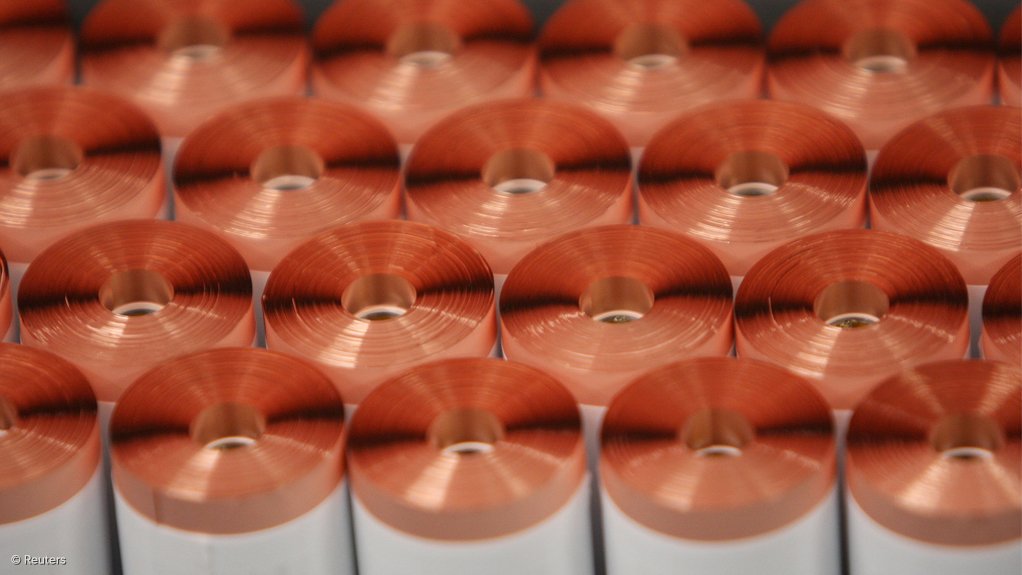TORONTO (miningweekly.com) – The TSX-listed stock of project developer Nemaska Lithium on Monday spiked after the company released an updated feasibility study on the Whabouchi mine and concentrator, which will be built in the Eeyou Istchee James Bay territory, in Quebec, as well as the hydromet plant, which will be located in Shawinigan, also in the province.
The Quebec City-based company advised that it was necessary to update the feasibility study to reflect the change of location of the hydromet plant from Salaberry-de-Valleyfield to Shawinigan and to reflect the optimisation of its processes.
The new feasibility study had doubled the after-tax net present value of the projects to C$1.16-billion, when applying an 8% discount, and had lifted the after-tax internal rate of return by 44% to 30.3%.
The updated feasibility study entailed a combined openpit and underground mine plan that would exploit proven and probable reserves of 20-million tonnes grading 1.53% lithium oxide (Li2O). The underground mine had proven and probable reserves of 7.3-million tonnes at 1.28% Li2O.
While the total initial capital outlay had risen by C$49-million to C$549-million, including contingency, the capital payback period would now be 35% quicker at just under two-and-a-half years.
Over the 26-year life-of-mine, Nemaska expected to produce on average 213 000 t/y of concentrate from which it would produce about 27 500 t/y of lithium hydroxide and about 3 245 t/y of lithium carbonate.
During the first 20 years, production would be derived from an openpit, developed to a maximum depth of 190 m and with an average strip ratio of 2.2:1. The openpit would be mined using a standard fleet of off-road mining trucks and hydraulic excavators at a rate of 2 740 t/d of ore.
During the last six years, production would be derived from an underground operation at 3 342 t/d and accessed via a ramp within the openpit. The underground development would reach an average depth of 90 m below the pit bottom. Nemaska would use longhole stoping with the crown pillar below the pit recovered at the end of the mine life.
These improvements would enable Nemaska to be a low-cost producer of lithium hydroxide at C$2 693/t, while lithium carbonate would cost C$3 441/t. “Our new costs of production for lithium hydroxide and lithium carbonate are respectively 22% and 18% lower than our production cost in the 2014 feasibility study. We also took into consideration the current trends in the US to Canadian dollar exchange rate, as well as the forecast prices of lithium compounds to reflect the reality of price increases in the lithium compounds market,” stated president and CEO Guy Bourassa.
SHOVEL READY
Nemaska had previously received the General Certificate of Authorisation for the Whabouchi mine project from the Quebec Ministry of Sustainable Development, Environment and The Fight Against Climate Change on September 8, 2015, and was granted a positive federal decision on July 29, 2015, rendering the Whabouchi project shovel ready.
The project development schedule assumed that the Shawinigan buildings necessary to install the hydromet plant would be made available to Nemaska during the first quarter of 2017 and that detailed engineering work for the mine project would have started by the end of the current quarter. On site, power requirements at the mine were expected to average 6.5 MW during operations and would be provided by a 69 kV power line connecting Whabouchi to the nearby Nemiscau hydroelectric power station.
Nemaska had chosen Shawinigan as the site for the hydromet plant owing to its existing infrastructure and availability of existing buildings. The site was serviced by the CN railway system and a pool of skilled workers and contractors from Shawinigan and the Mauricie area. The hydromet plant would be state of the art and would use Nemaska’s patented process to convert the spodumene concentrate into the purest lithium hydroxide on the market. Other deciding factors were its proximity to the Hydro-Quebec network, as the plant would use close to 50 MW once in full operation, and access to the natural gas network.
PRICE UPSIDE
The updated study assumed a lithium hydroxide price 19% higher than previously anticipated at $9 500 free on board (FOB) Shawinigan, and a lithium carbonate price of $7 000/t FOB Shawinigan – a 40% price improvement over 2014 estimates.
To complete the update of the feasibility study, Nemaska had commissioned Roskill Consulting Group to complete an independent market analysis report. The report, titled Lithium Market Overview and Outlook February 2016, predicted that lithium compounds could be in short supply by as early as 2018.
The report showed growth in demand for battery-grade lithium hydroxide, which was forecast to outpace all other lithium compounds over the next decade, with a 15.5% compound annual rate of growth from 2015 to 2025. Roskill expected this increase in demand to be reflected in the term contract selling price of battery-grade lithium hydroxide, which the consulting group predicted would increase from $8 640/t in 2015 – insurance and freight included – to $13 210/t in 2025, representing a 52% increase in term sales price.
"Lithium hydroxide is emerging as a new chemistry of choice for battery cathode manufacturers because it creates a battery with better power density, longer life cycle and enhanced safety features," said Bourassa.
"Our decision to directly produce lithium hydroxide, rather than take the traditional route of producing lithium carbonate and then transforming it into hydroxide gives us a leading cost advantage in the fastest growing segment of all the lithium compounds."
Nemaska's TSX-V-listed stock on Monday jumped 21% to C$0.80 apiece.
Edited by: Samantha Herbst
Creamer Media Deputy Editor
EMAIL THIS ARTICLE SAVE THIS ARTICLE
To subscribe email subscriptions@creamermedia.co.za or click here
To advertise email advertising@creamermedia.co.za or click here













